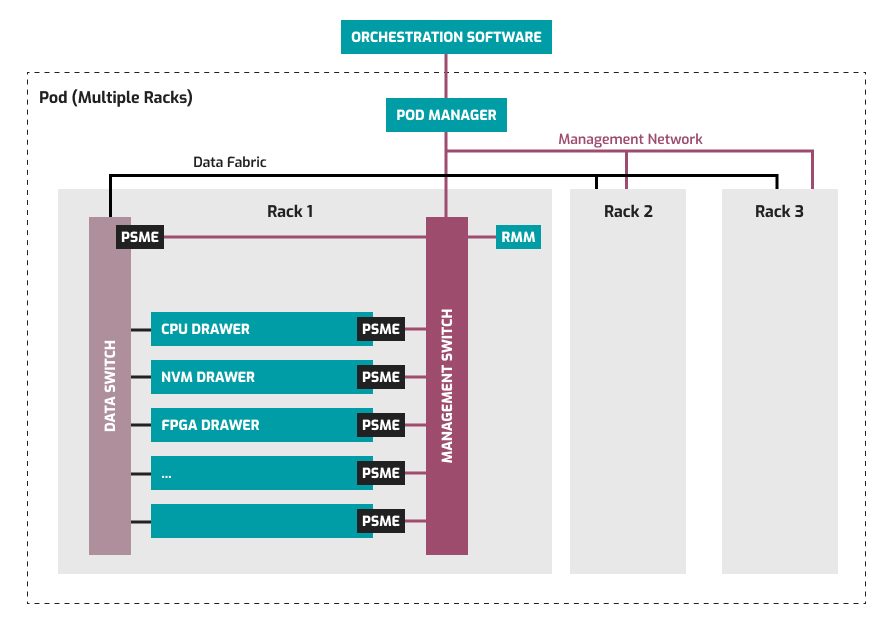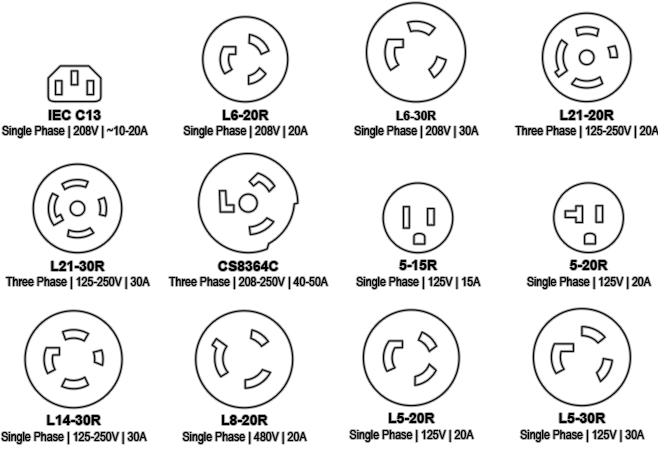Rack Scale Architecture Overview
Hardware Resources
Being a disaggregated architecture, RSD means that data center hardware resources (compute, storage, acceleration, and networking) can be installed as individual modules within a rack. These can be packaged as blades, sleds, chassis, drawers or larger physical configurations as needed.
Pooled System Management Engine (PSME)
At the lowest level, each individual resource module will have a software controller component called the Pooled System Resource Manager (PSME), which can be installed at the blade, module, or rack level. The PSME reveals what resources are available in the module and exposes APIs to higher levels via the Ethernet management network.
Rack Manager Module (RMM)
The Rack Manager Module (RMM) communicates with the PSMEs and takes responsibility for a variety of rack-oriented functions, including distributing security certificates to PSMEs, managing rack power and cooling, reporting environmental and health status, and designating and reporting the physical location of each asset with the rack.
Pod Manager (PODM)
The Pod Manager (PODM) software manages functions within and across racks for a single pod. The southbound PODM APIs interact with the PSMEs and the RMMs. The northbound PODM APIs are exposed to the user’s choice of orchestration software such as OpenStack*, Vmware, or other commercial, open source or custom DCIM software.
Data Network and Management Network
Resource modules within the RSD architecture will have at least two networking connections, the high-bandwidth data connection, and a separate out-of-band Ethernet link to a dedicated management network. These two networks typically connect to top-of-rack switches that can be connected to other racks, making up a management domain called a “pod.”


 Cooling
Cooling